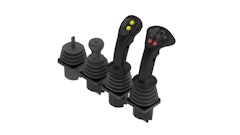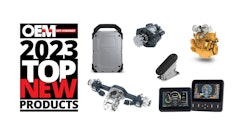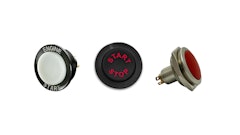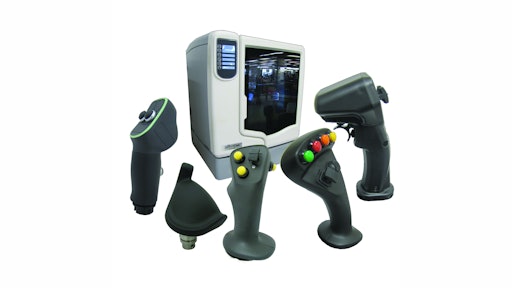
Every generation is fortunate to have its predecessor’s knowledge and ingenuity established as its foundation. That is how society can continually develop and build upon itself. The newest generation of equipment operators has the luxury of understanding the concept of joystick controls, almost inherently, having grown up with video games and various controllers. They have an understanding and acceptance of the learning curve associated with adjusting to new controller functions for different games and systems.
And, in the age of computer games, motion-controlled video game consoles and touchscreens, open access to a diverse range of advanced technology interfaces has created a generation of intuitive operators with an accelerated sense of trial-and-error troubleshooting to teach themselves how to use a system quickly.
Taking that one step further beyond the operator, the next generation of control designers too has grown up with rapidly evolving control modules from game systems and advanced automotive interfaces. Their base level of “normal” is much more advanced than even 10 years ago.
“The obvious technology shift in the past years has been the wider use and acceptance of electronics on machinery,” says Keith Simons, President - Controls Products, OEM Controls, Inc. (company information, 10055864). “All types of machinery, ranging from small machines like mowers all the way up to large equipment, are using more electronics to make the machine more efficient by making it easier to operate. We have to design controls to enhance the operator experience while helping to operate a machine efficiently without needing years of experience. The electronics advance the capabilities of the machines themselves, allowing them to do more work with little additional input from the operator.”
Regulations for vehicle controls help guide the design with regards to safer and improved operation. “Tier 4 was a big mover for electronic controls because once the engine had electronics for monitoring, it only made sense to be electronically controlled as well,” explains Simons. “You can tie a control’s functions to feedback from the engine system, for example. If the engine gets bogged down, the operator can still push the joystick full forward, but the feedback automatically tells the electronic system to regulate back the machine’s full-forward operation settings so the machine doesn’t stall or lose efficiency.”
At times, it can seem as though electronics are removing the need for an operator, especially with fully-autonomous vehicles already operating in the field. But for Simons, operators will never go away completely. “Many industries will always need an operator right there—in the moment—during a task being performed. Electronics aren’t there to remove the operator; it’s to assist and optimize the skill required by an operator to do the job as efficiently as possible.”
Down the road, existing video game technologies like voice control activation and motion-sensing control could become feasible for rugged off-road conditions, especially if the technology’s reliability and cost make it a commercialized expectation for operator interaction.
Intuitive design
Ergonomics and aesthetics remain the most important considerations. “The operator experience is essential during control design. We are working to get all of the controls closer to the operator to minimize the amount of reaching and searching needed. If everything is at their fingertips, they can do their job better, safer and more efficiently,” says Simons.
The controller’s “intuitiveness” must be designed and implemented by a human machine interface (HMI) manufacturer to create a joystick that is easy to learn by any operator; it must have a balance between the understanding of a game-adept operator and a skilled operator with years of experience working with a machine.
Joysticks have been growing in popularity as sensors and precision functionality have become commonplace. What used to be basic on-off valve interaction has evolved into precise proportional valve control to give an operator a better feel and more controllability of the machine’s movements. And, while there will always be a need for basic push buttons and keypads to interact with a machine in an on-off mode, OEM Controls is seeing a movement toward putting the button functionality into the joystick itself.
“That goes back to ergonomics and safety needs of an operator to avoid functions that require him to let go of a control and potentially lose sight (literally) of what he is trying to accomplish at that moment,” Simons explains. Micro-controllers can be installed directly onto a multi-functional joystick putting fine machine control right at the operator’s fingertips.
“Kids growing up today are used to playing with joysticks and having a lot of functionality at their fingertips. If they don’t have to take their hands off of the main joystick, their mind is used to fine movements and control. They have excellent fine motor skills just by nature of the technology they grew up with,” he says.
Simulation is the perfect example of video games colliding with off-road vehicle operation. Virtual training simulators allow an operator with any level of experience to interface with vehicle controls and run operations without needing to make costly mistakes on an expensive piece of iron. “The simulation needs the larger multi-functional joysticks that the operator is going to be using when they get into the real cab so there is complete familiarity,” says Simons.
“Intuitiveness is what is driving the need for larger joysticks with multi-functional control,” he explains. “When controls are more intuitive, operators become more efficient in making a logical decision of how to move a joystick to perform the function you intend. Intuitive functionality is essential, even vital for safe and efficient operation, as well as fast learning for new operators.”
A more intuitive controller makes the process of implementing a task from a conscious decision that takes several seconds of thought before the action is performed into a subconscious decision. “It comes down to creating a joystick that just makes sense to interact with the machine,” says Simons.
Growing in value while shrinking in size
OEM Controls has around 20 different types of joysticks that range in size from small to large, in both single-axis controllers and multi-axis joysticks. A complex machine like a utility bucket truck in the past would have four joysticks and a large panel. Because of electronics and CANbus, the functions (the X and Y axes, twist, and push-pull mechanical) can be incorporated into one base joystick with ever increasing options for multi-functional grip handles on top.
The ability to shove lots of functionality into one joystick is because of the growing precision and shrinking size of sensors and electronics. “We’ve made small 2-axes and X-Y joysticks the size of a quarter in diameter, while still providing very good proportional feel to it, demonstrating advancements in the size and precision of the electronic technologies that are out there today.
“CANbus technology helped to reduce the amount of wires on a machine and send messages all over the machine quickly to make the machine more efficient. With our joysticks, we’ve included a lot of CANbus I/O to reduce the need for our customers to buy another module to mount near the joysticks. They can simply put all of the wires from a panel into the joystick and reduce their overall cost of the machine and cost of labor to assemble the machine itself,” says Simons.
And, while Simons does see a trend toward smaller joysticks and controls, ruggedness is still essential for off-road vehicle environments and working conditions. “You can’t reduce a joystick to the point where its ruggedness is affected. Its performance is still expected to last for years in the field without breaking, so the main controller still needs to be a decent size. But, as technology is getting better and different metals and materials are being created and dropping in price, we are able to make controllers smaller while maintaining their rugged performance characteristics,” he says. “The hope is that with technology and materials improving, we can reduce the overall size of the joystick when possible.”
Appearance matters
When it comes to the design of the handle, everybody has their own shape that they feel is the most attractive. Aesthetics plays a large role in the design of a joystick considering operators sit in the cab all day long. “The shapes are always evolving, and with today’s technology of rapid prototyping 3D printers, it gives us the ability to quickly come up with a concept—even if it isn’t fully fleshed out yet dimensionally—print it and send it to the customer to get feedback. CAD software coupled with 3D printing has dramatically increased the ability for our industry to provide the operator experience that all manufacturers are trying to develop,” says Simons.
OEM Controls considers itself to be a “mass-customization house,” says Simons. Each equipment manufacturer and its individual machines will have different operator quirks and features to address, on which OEM Controls works together with each customer. The use of joysticks and electronics is wide spread across all off-road industries, so it is difficult to get consistent feedback to apply to a control design for broad-based changes that meet the needs of everyone—or even a majority. Thus, customization is key. “We have the ability to customize everything—features, benefits, design—but also the ability to mass produce controls. Depending on the industry, the demand can range from 500 units to tens of thousands per year.
“An OEM cares about how the operator is using the controls in the machine’s cab depending on the operation being performed, while taking regional differences (environmental, cultural, regulatory) into consideration. The OEM communicates those specific requirements to us, and we work together to produce prototypes to address those individual needs. This is where 3D printing really benefits us.”
Each industry is drawn to certain functionality features on the controller, but the specialization comes in as to how the manufacturer wants its particular control station or panel to look. “That’s the importance of aesthetics. If something looks cooler, it’s more likely to impress an operator. While the core product family may be the same, we focus on customizing each customer’s finished product with a unique look and feature package so they have a competitive differentiator.
“We’ve realized that we can’t be everything to everybody, and we don’t want to be. But we do want to be that company that provides the module or controller that somebody else doesn’t make. In certain situations, you don’t need the module that’s offered, so we will make one that perfectly matches your situation and in your panel requirements with the right amount of I/O that you need for that area.
“In the age of making the machines better, faster, stronger, smarter and less expensive, these capabilities are proving to be a very good market plan for us delivering tremendous value to our customers.”









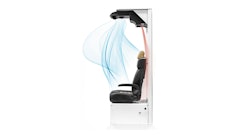

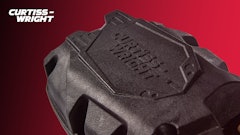
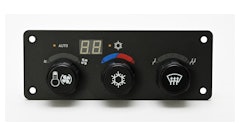
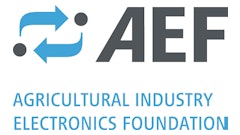
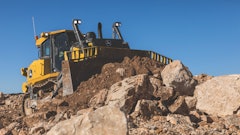
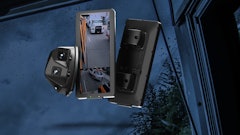

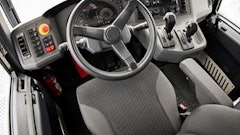
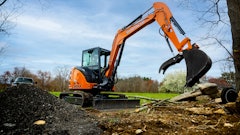
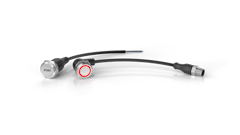
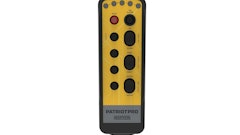
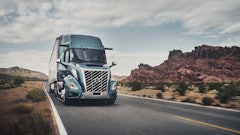


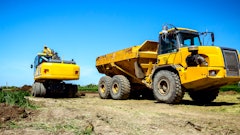
![Volvo Penta Sets Sights On Productivity Advancements 03[1]](https://img.oemoffhighway.com/files/base/acbm/ooh/image/2023/11/Volvo_Penta_sets_sights_on_productivity_advancements_03_1_.65690b8f96926.png?auto=format%2Ccompress&fit=crop&h=135&q=70&w=240)
